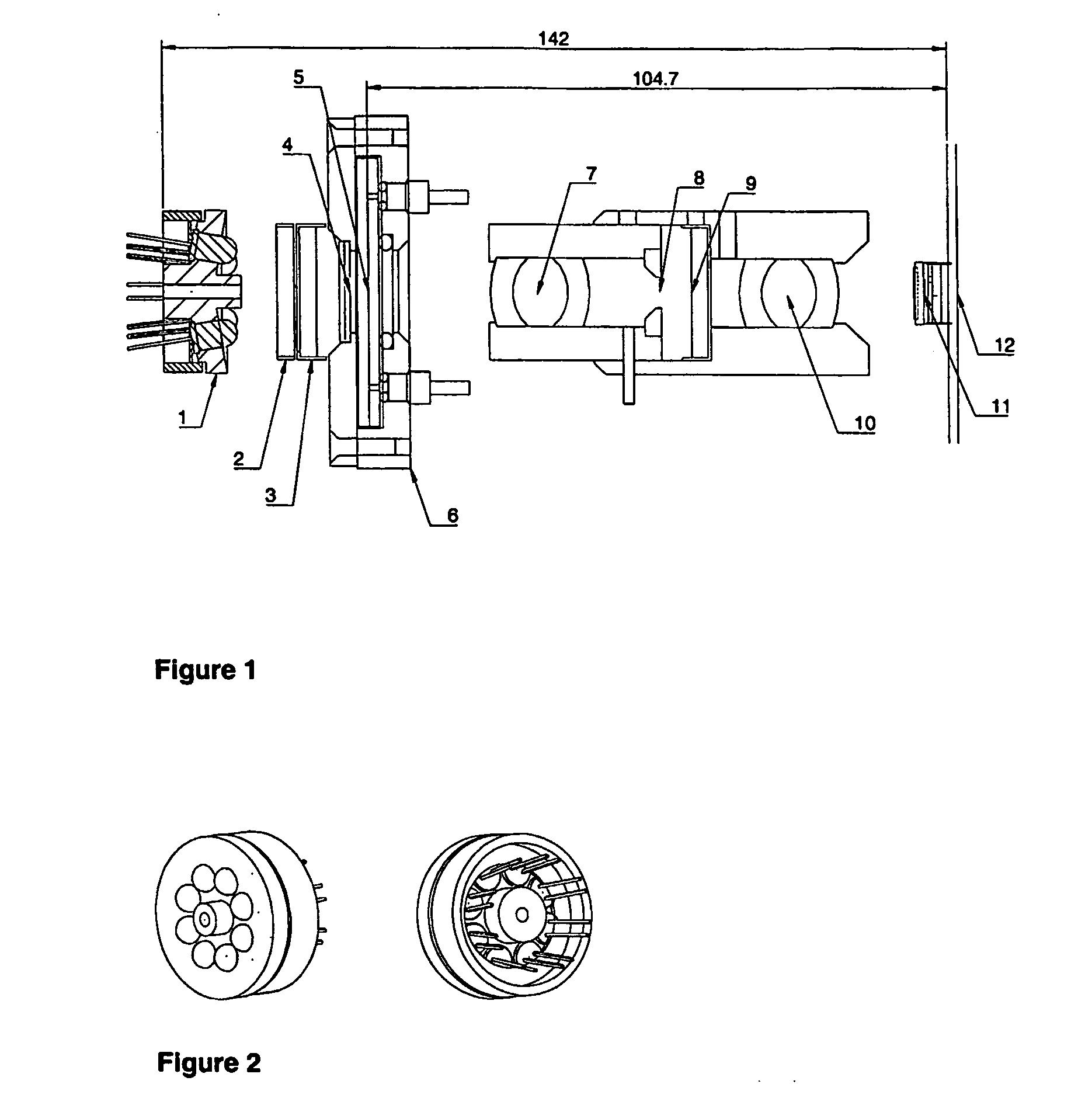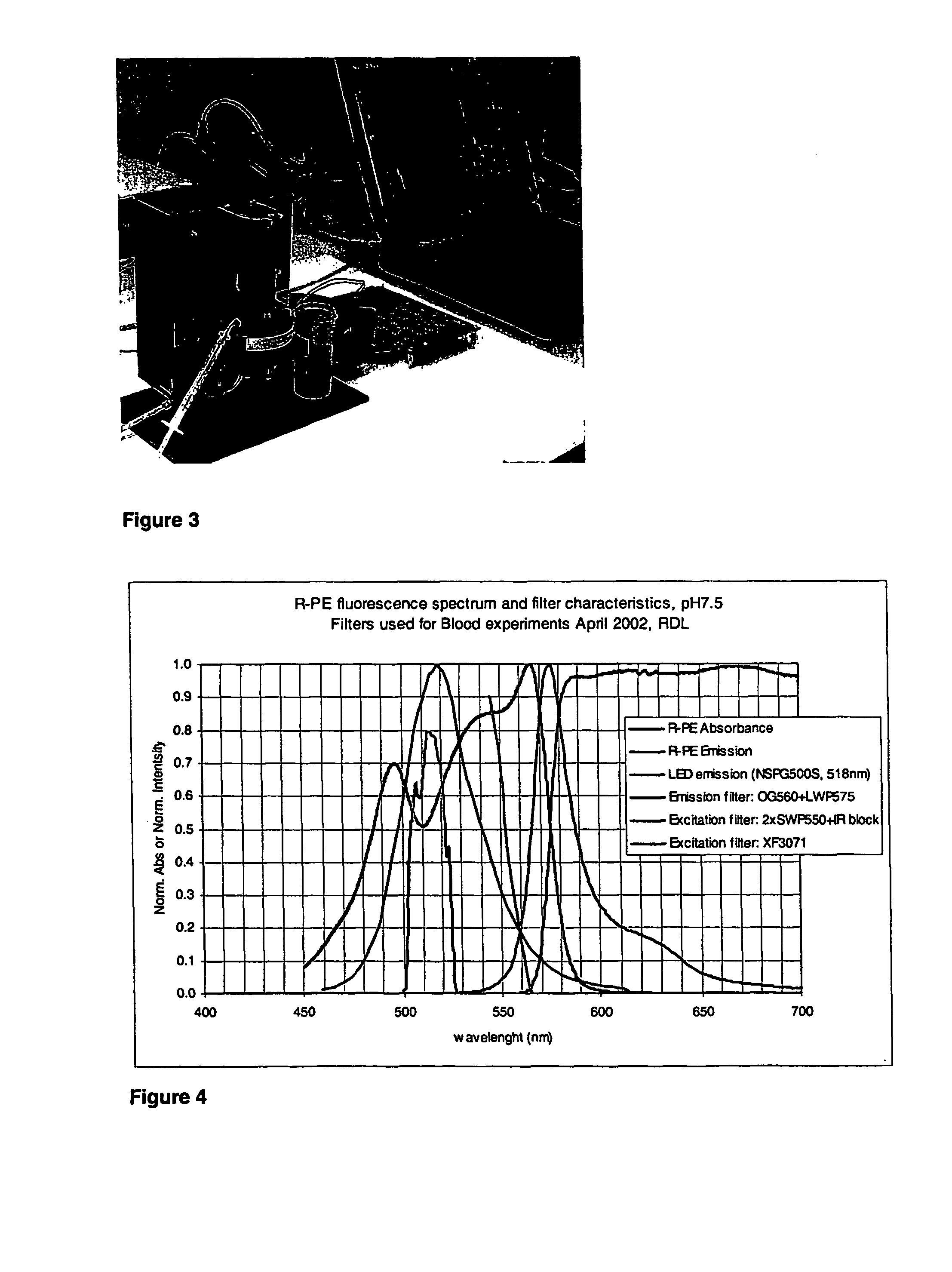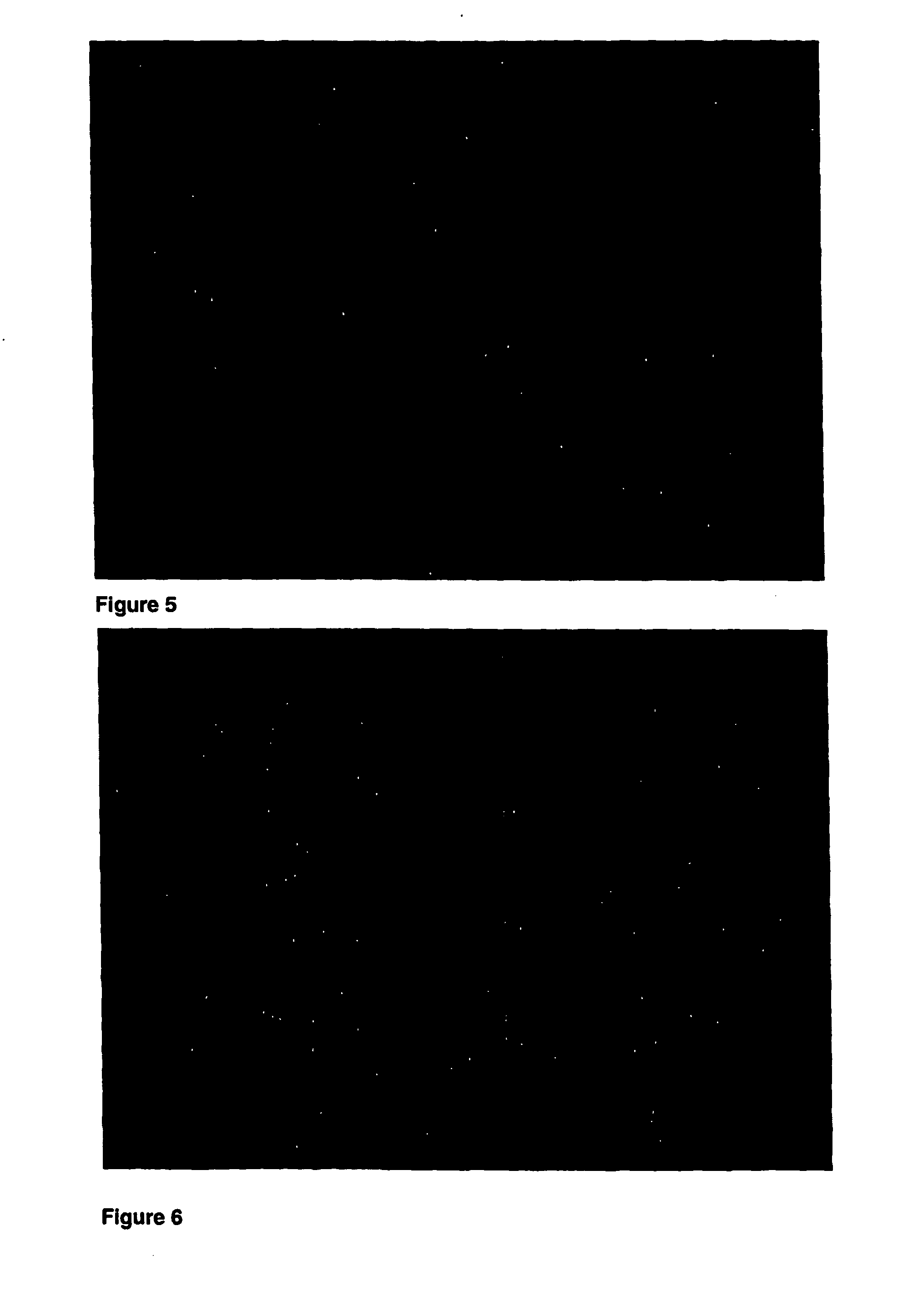Method for assessment of particles
a particle and particle technology, applied in the field of methods for particle assessment, can solve the problems of difficult detection and the size of many substances and particles is so small
- Summary
- Abstract
- Description
- Claims
- Application Information
AI Technical Summary
Benefits of technology
Problems solved by technology
Method used
Image
Examples
example 1
Experimental Study on Detection and Quantification of Specific Surface Markers on Human Blood Cells.
Procedure
[0215] A calibration curve was constructed by measuring beads with known fluorescence intensities (QuantibritePE beads, Becton-Dickinson, Cat.No. 340495) diluted in an IgG1 / phycoerythrin (PE) stained control blood sample. It was possible to detect and distinguish three of the four populations of fluorescent beads based on FIG. 7 to 10, where there are three distinct populations of beads above the background level (see also Table 2 with data). Two different lots of beads were measured in order to distinguish at least four different populations of beads. This enabled the construction of a calibration curve that specifies the correlation between the integrated fluorescence intensity (IFI) and the number of fluorescent PE molecules on the individual objects being measured (known from the manufacturer, Becton-Dickinson QuantibritePE beads CAT# 340495). The calibration curve is...
example 2
Investigation of the Feasibility of the Present Invention for the Assessment of Particles with Limited Number of Analyte Positions
[0292] A series of testing of the feasibility of detecting particles with analytes, in a amount of less than 1×106 analyte detectable positions were conducted. In all tests the detection system was equivalent to the system presented in FIG. 24, configured for transversal magnification of approximately 1.
PUM
| Property | Measurement | Unit |
|---|---|---|
| Fraction | aaaaa | aaaaa |
| Fraction | aaaaa | aaaaa |
| Fraction | aaaaa | aaaaa |
Abstract
Description
Claims
Application Information
 Login to View More
Login to View More - R&D
- Intellectual Property
- Life Sciences
- Materials
- Tech Scout
- Unparalleled Data Quality
- Higher Quality Content
- 60% Fewer Hallucinations
Browse by: Latest US Patents, China's latest patents, Technical Efficacy Thesaurus, Application Domain, Technology Topic, Popular Technical Reports.
© 2025 PatSnap. All rights reserved.Legal|Privacy policy|Modern Slavery Act Transparency Statement|Sitemap|About US| Contact US: help@patsnap.com



